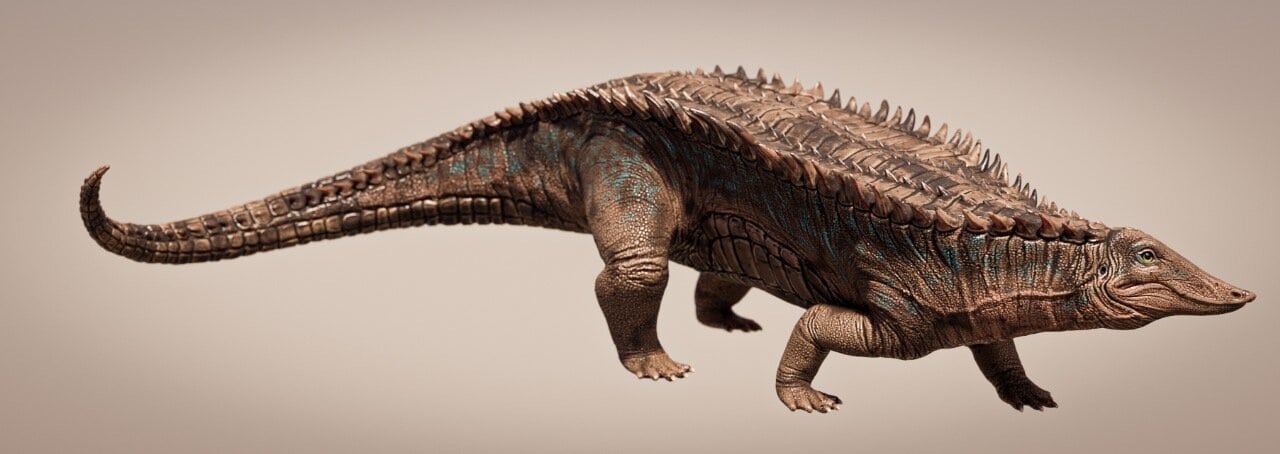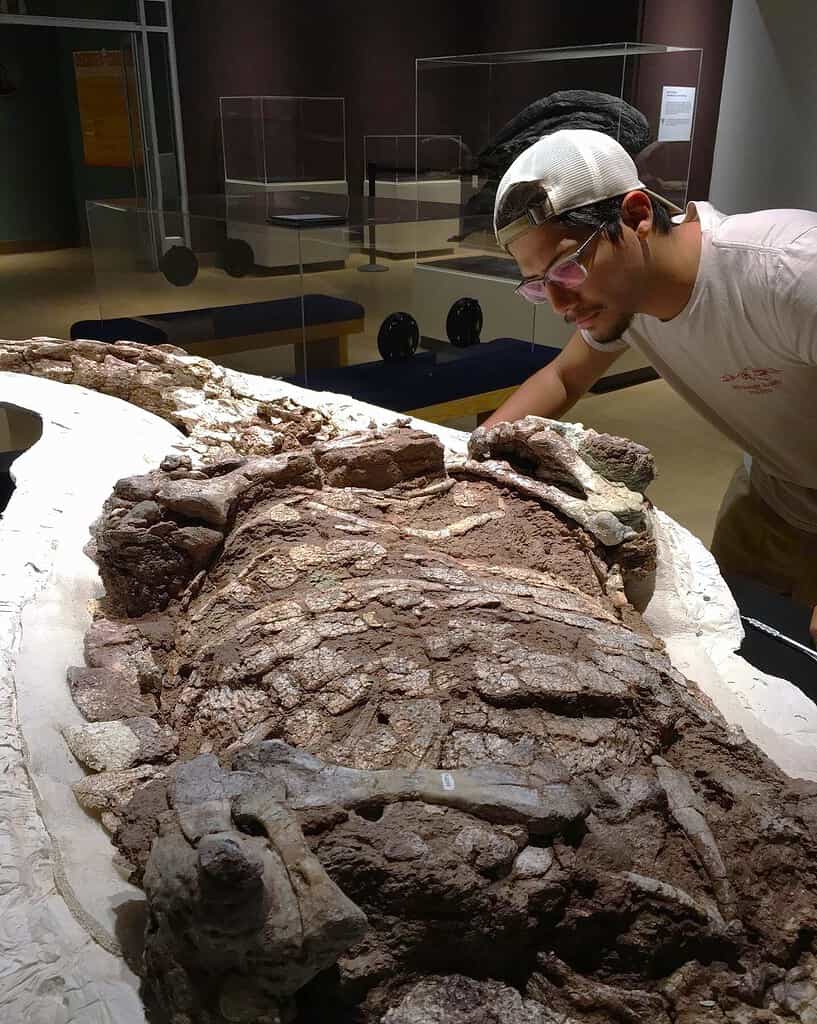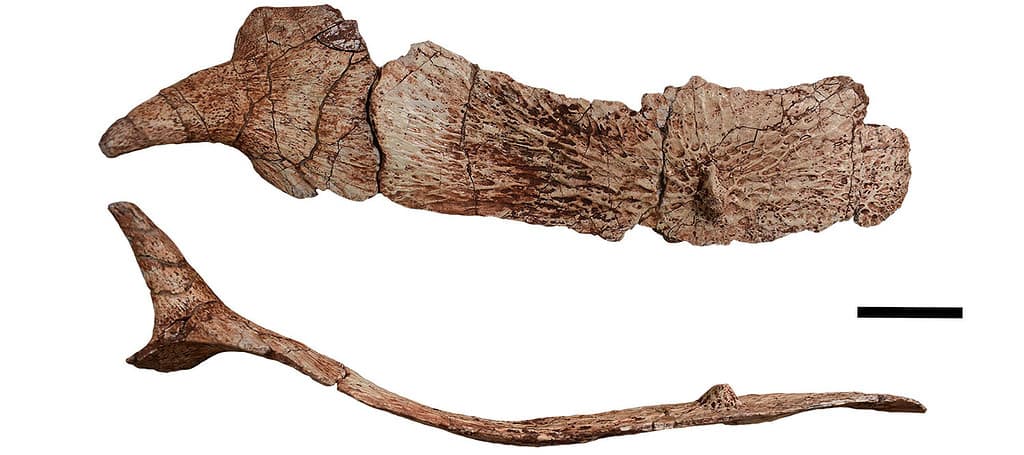
Dinosaurs often steal the prehistoric spotlight, but before their reign, aetosaurs — the heavily armored relatives of today’s crocodiles — dominated the world. These Triassic behemoths thrived until their extinction about 200 million years ago. Their fossils are scattered across every continent except Antarctica and Australia, a testament to their ecological success over millions of years.
Researchers primarily distinguish between aetosaur species through their bony armor plates. Typically, fossil remains are few and far between but a new study by The University of Texas at Austin focuses on nearly complete aetosaur armor. It would have covered most of the creature’s body.
This armor, or carapace, is approximately 70% intact, spanning from the neck and shoulders to the tail tip. This new analysis offers a rare, comprehensive view of an aetosaur’s protective covering. “Usually, you find very limited material,” said William Reyes, a doctoral student at the UT Jackson School of Geosciences who led the research.

While studying this plated armor, Reyes and colleagues realized that it didn’t match the patterns of previous specimens. They make a compelling case that the fossils belong to a new aetosaur species named Garza pelta muelleri. This name pays homage to Garza County, Texas, where the discovery was made, and Bill Mueller, the paleontologist who found it, with “pelta” meaning shield in Latin.
Part croc, part armadillo
Garzapelta lived around 215 million years ago and resembled today’s American crocodile but much more heavily armored. And they look similar for a reason. Aetosaurs and crocodilians both belong to the ancient clade Pseudosuchia.
“Take a crocodile from modern day, and turn it into an armadillo,” said Reyes, describing the intimidating ancient beast.
Part crocodile, part armadillo, but also part bird and pig. That’s because aetosaurs — whose name means “eagle lizard — had a head resembling a bird, which ended in a pig-like snout over a shovel-shaped jaw. What a mixture indeed.


Garzapelta‘s armor was made of osteoderms embedded in the skin, which formed a protective suit, complemented by curved spikes for extra defense. Unlike modern carnivorous crocodiles, aetosaurs were likely omnivorous. Aetosaurs were sizeable reptiles that grew to be one to five meters long, the average being about three meters (10 feet).
Interestingly, the menacing spikes of Garzapelta are very similar to those found on another aetosaur. However, the two are not directly related. Instead, the spikes are the result of convergent evolution — where unrelated species independently evolve similar traits. Many times this happens because they share the same evolutionary pressures. Another example is the evolution of the ability to fly, which has occurred independently in insects, birds, and bats.
The findings appeared in The Anatomical Record.






